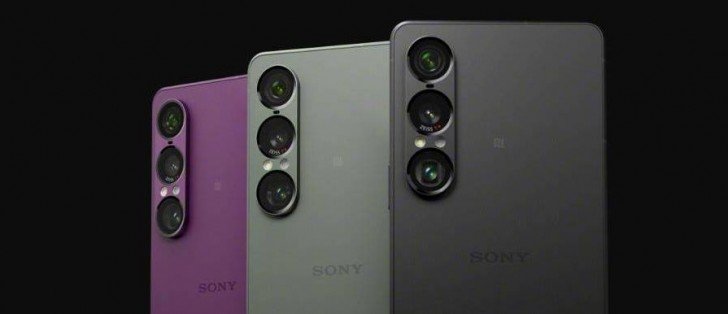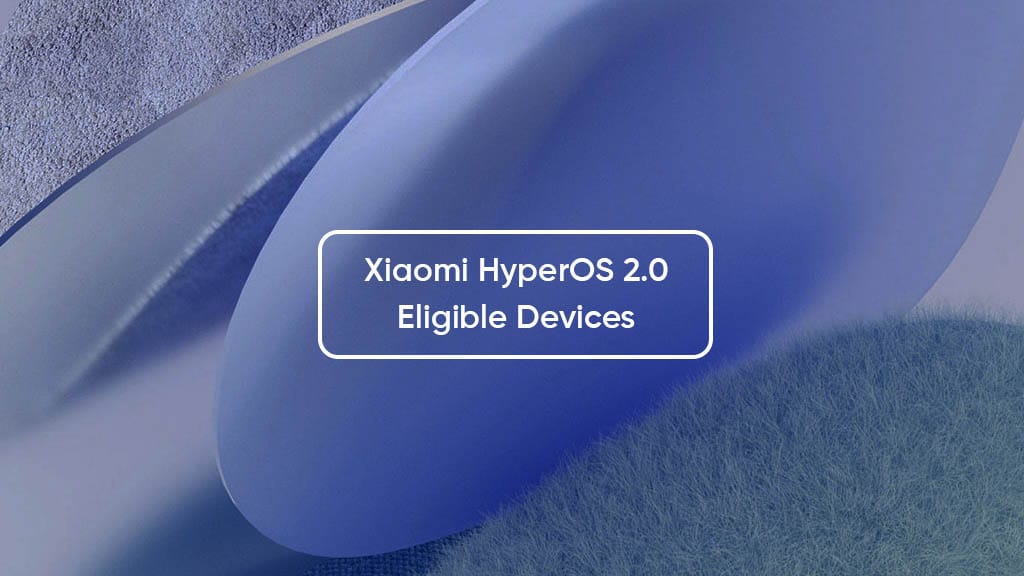Smartphones
Samsung vs Google: The Quiet Tension in Android’s Future
Samsung vs Google: The Quiet Tension in Android’s Future

Samsung and Google have long collaborated in the Android ecosystem, but subtle tensions are beginning to surface-and may soon become more pronounced.
The recent launch of Samsung’s Galaxy S25 showcased a deep integration with Google’s AI and software ecosystem. Yet, beneath this partnership lies a competitive edge. When it comes to Android version upgrades and monthly security updates, Samsung still trails Google’s Pixel phones, which receive priority treatment.
This dynamic may become more complex as global shifts emerge. With China’s tech giants facing ongoing restrictions, companies like Huawei are pushing forward with Google-free operating systems. If more Chinese OEMs follow suit, Android’s global structure could change dramatically. That would leave Samsung as Android’s dominant manufacturer-but still reliant on Google, its software provider and, in some ways, a competitor.
This could set the stage for a new kind of rivalry-one where Samsung and Google must balance collaboration with competition, all while Android’s global footprint shifts under pressure. As the tech world watches, the future of Android may come down to how these two giants manage their shared, but divergent, paths.

Sony
Sony Xperia 1 VII Launched with Snapdragon 8 Elite and Advanced Ultrawide Camera
Sony Xperia 1 VII Launched with Snapdragon 8 Elite and Advanced Ultrawide Camera

Sony has officially launched the Xperia 1 VII, bringing major improvements in both performance and photography. This flagship smartphone is powered by the latest Snapdragon 8 Elite chipset and features upgraded camera sensors, making it a powerful choice for mobile photography enthusiasts.
Camera Upgrades:
The Xperia 1 VII features a triple rear camera setup with Sony’s advanced Exmor T stacked CMOS sensors, providing better low-light photography and improved dynamic range. The camera system includes:
- Main Camera: 48 MP, f/1.9 aperture, 24mm lens, 1/1.35″ sensor, with Dual Pixel PDAF and Optical Image Stabilization (OIS).
- Ultrawide Camera: 12 MP, f/2.2 aperture, 16mm lens, 1/2.5″ sensor, with Dual Pixel PDAF.
- Telephoto Camera: 12 MP periscope lens with continuous optical zoom (70mm to 200mm), f/2.3–f/3.5, 1/3.5″ sensor, with Dual Pixel PDAF and OIS.
This versatile setup ensures excellent photo and video quality across different zoom ranges and lighting conditions.
Performance and Display:
- Processor: Qualcomm Snapdragon 8 Elite for faster performance and efficiency.
- RAM and Storage: Comes with 12 GB or 16 GB RAM and storage options of 256 GB and 512 GB, expandable via microSD.
- Display: 6.5-inch OLED with 4K resolution and 120 Hz refresh rate, offering vibrant visuals and smooth scrolling.
- Battery: 5,000 mAh with fast charging and wireless charging support.
- Audio: Retains the 3.5mm headphone jack, stereo speakers, and high-res audio support.
Availability and Pricing:
The Sony Xperia 1 VII will be available in Europe starting July 2025. The price starts at €1,499, which is approximately ₹1,35,000 INR (subject to exchange rates and taxes).
Stay tuned for official India launch details from Sony.

October is shaping up to be a big month for phone announcements. We already know the vivo X200 flagships will be announced on October 14, and today, we learned that two major players will release their own flagships the following weeks.A leakster with a solid track record revealed that Xiaomi 15 phones will be introduced on October 20, and the Honor Magic 7 series is set to arrive on October 30.
A leakster with a solid track record revealed that Xiaomi 15 phones will be introduced on October 20, and the Honor Magic 7 series is set to arrive on October 30.
All these phones launching in October have one thing in common – they are all expected to have Snapdragon 8 Gen 4 or Dimensity 9400 chipsets. Qualcomm and Mediatek will introduce their flagship SoCs in the following days, and phone makers will quickly follow with their announcements.
OEMs in China have an extra incentive to launch their phones in October as they prepare for one of the biggest shopping festivals in the country: Singles’ Day is on November 11.
Aside from the obvious chip update, we expect vivo to bring a new X200 Pro mini to the series, while Xiaomi is expected to put a 200 MP periscope telephoto camera in the 15 Ultra. In November Oppo is gearing up to announce three flagships for the first time in the history of Find X phones – vanilla, Pro, and Ultra
Redmi
HyperOS 2.0: Eligible Xiaomi Devices [Expected List]
HyperOS 2.0: Eligible Xiaomi Devices Expected List

Xiaomi will unveil the HyperOS 2.0 operating system this year and it’s time to dive into the eligible devices that will experience this new upgrade. Here we are sharing a list of expected models that may receive this significant upgrade in the time ahead
The Chinese tech giant hasn’t confirmed the launch of HyperOS 2.0. Hence, it’s unclear when the official software rollout will take place. Although we’ve reached some conclusions based on the last year’s software introduction and update distribution.
HyperOS 1.0 came into existence with the Xiaomi 14 series and debuted on 31st October. We are in the same month and the company will likely unveil its Xiaomi 15 series after the Chinese Golden Week running from October 1 to October 7, 2024.
At the same time, Xiaomi may also introduce HyperOS 2.0 for its devices. It could also share the upgrade plan revealing all the compatible models that will receive the ultimate software treatment with several new features and smart capabilities.
Android 14 or 15?
Xiaomi has been treating its Android skin differently from others. While many smartphone vendors run their customized OS on one Android version, Xiaomi uses two of them at the same time. HyperOS 2.0 will also come based on two versions: Android 14 and Android 15. This difference ensures that every model can fetch the latest enhancements
The company hasn’t announced any roadmap for HyperOS 2.0. But here is an expected list of all those Xiaomi devices that may get the new software in the future.
Xiaomi
- Xiaomi 15 series (pre-install expected)
- Xiaomi 14
- Xiaomi 14 Pro
- Xiaomi 14 Ultra
- Xiaomi 14 Pro Ti Satellite
- Xiaomi 14T
- Xiaomi 14T Pro
- Xiaomi 13
- Xiaomi 13 Pro
- Xiaomi 13 Ultra
- Xiaomi 13T
- Xiaomi 13T Pro
- Xiaomi 13 Lite
- Xiaomi 12
- Xiaomi 12 Pro
- Xiaomi 12S Ultra
- Xiaomi 12S Pro
- Xiaomi 12S
- Xiaomi 12 Lite
- Xiaomi 12T Pro
- Xiaomi 12T
- Xiaomi 12 Pro Dimensity Edition
- Xiaomi Mi 11
- Xiaomi Mi 11 Pro/Ultra
- Xiaomi 11T Pro
- Xiaomi 11T
- Xiaomi Mi 11 LE
- Xiaomi 11 Lite 5G NE
- Xiaomi Civi 1S
- Xiaomi Civi 2
- Xiaomi Civi 3
- Xiaomi Civi 4 Pro
- Xiaomi Pad 5 Pro 12.4
- Xiaomi Pad 6
- Xiaomi Pad 6 Pro
- Xiaomi Pad 6 Max 14
- Xiaomi Pad 6S Pro 12.4
- Xiaomi MIX FLIP
- Xiaomi Fold 3
- Xiaomi MIX FOLD 4
Redmi
- Redmi K70
- Redmi K70 Pro
- Redmi K70 Ultra
- Redmi K70E
- Redmi K60
- Redmi K60 Pro
- Redmi K60 Ultra
- Redmi K60E
- Redmi K50
- Redmi K50 Pro
- Redmi K50 Ultra
- Redmi K50 Gaming
- Redmi K50i/K50i Pro
- Redmi 14C/Redmi A3 Pro
- Redmi 14R 5G
Redmi 13 - Redmi 13 5G/Redmi Note 13R
- Redmi 13R/Redmi 13C 5G
- Redmi Note 13/5G/NFC
- Redmi Note 13 Pro/Pro+
- Redmi 12/12 5G
- Redmi Note 12/12 Pro/Explorer/12 Pro Speed Edition
- Redmi Note 12R Pro/Redmi Note 12
- Redmi Note 12 NFC
- Redmi Note 12 Turbo
- Redmi Note 12S
- Redmi Note 12 4G
- Redmi Pad Pro 5G
- Redmi Pad Pro
- Redmi Pad SE 4G
- Redmi Pad SE 8.7
POCO
- POCO M6
- POCO M6 Plus 5G
- POCO M6 Pro
- POCO M6 Pro 4G
- POCO M5
- POCO X6 5G
- POCO X6 Pro
- POCO X6 Neo
- POCO X5 5G
- POCO X5 Pro 5G
- POCO F6
- POCO F6 Pro
- POCO F5 5G
- POCO F5 Pro
Note: This is an expected device list based on previous revelations and update rollouts of the company. Xiaomi may add or remove devices based on software compatibility. We’ll keep you posted with the latest updates on this topic
-
Health and Fitness3 days ago
Mega Free Eye Check-up Camp at Trichy
-
Tiruchirappalli3 days ago
Transforming Trichy’s Transport: Why Panjappur Must Be the Sole Mofussil Bus Hub
-

 Religious2 days ago
Religious2 days agoSamayapuram Mariamman Temple: 13th Day Vasanthotsavam Celebration in Golden Lotus Chariot
-

 Tiruchirappalli2 days ago
Tiruchirappalli2 days agoProposed ULE Bus Routes to Boost Trichy’s Public Transport
-
Tiruchirappalli3 days ago
Thuvakudi Industrial Growth Hub of Trichy
-
Tiruchirappalli3 days ago
TVS Toll Gate: Trichy’s Emerging Gateway of Growth
-

 Tiruchirappalli23 hours ago
Tiruchirappalli23 hours agoTiruchirappalli International Airport: Tamil Nadu’s Fastest Growing Airport
-
Tamilnadu23 hours ago
Tamil Nadu Leads the Way in Intra-State Air Connectivity




